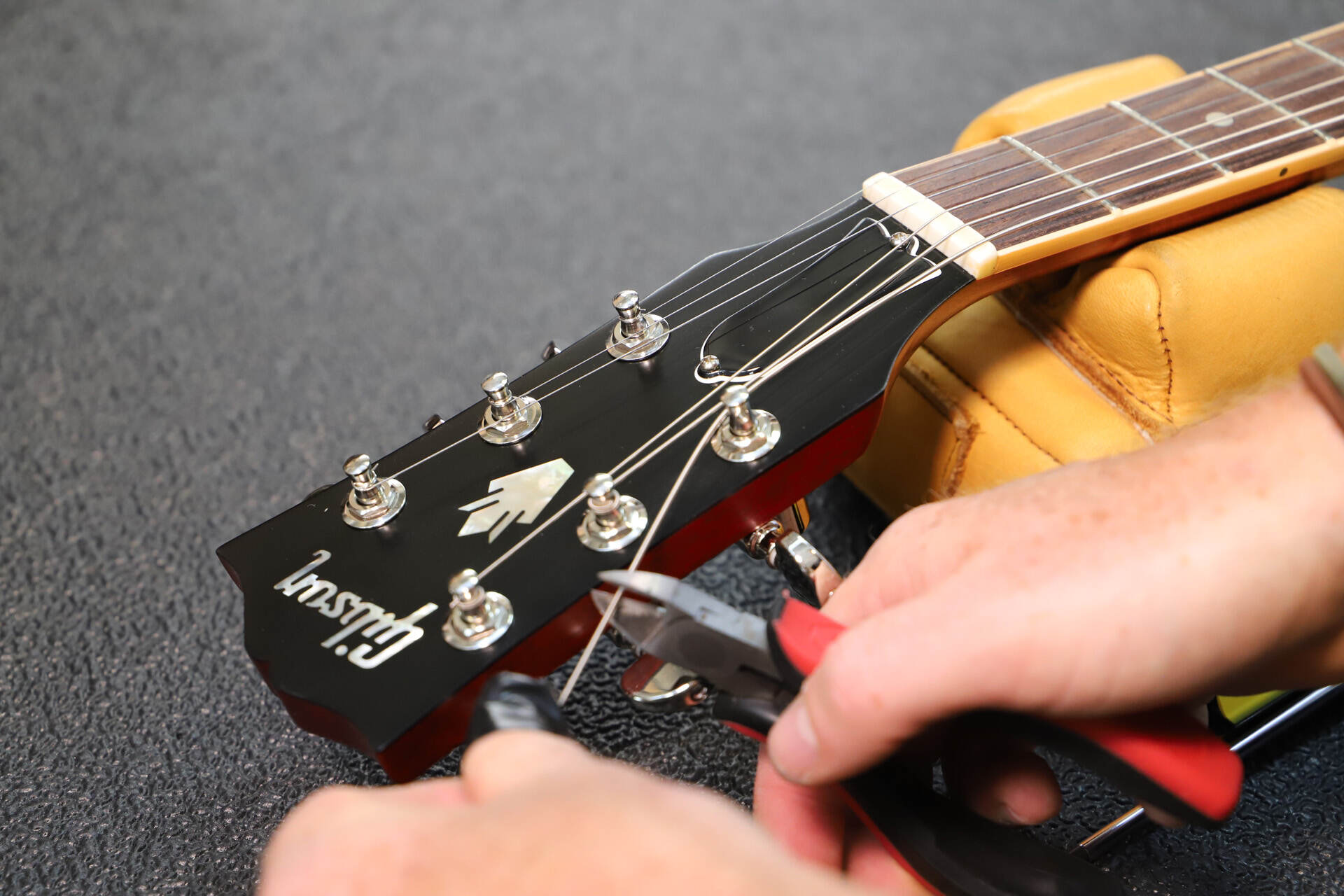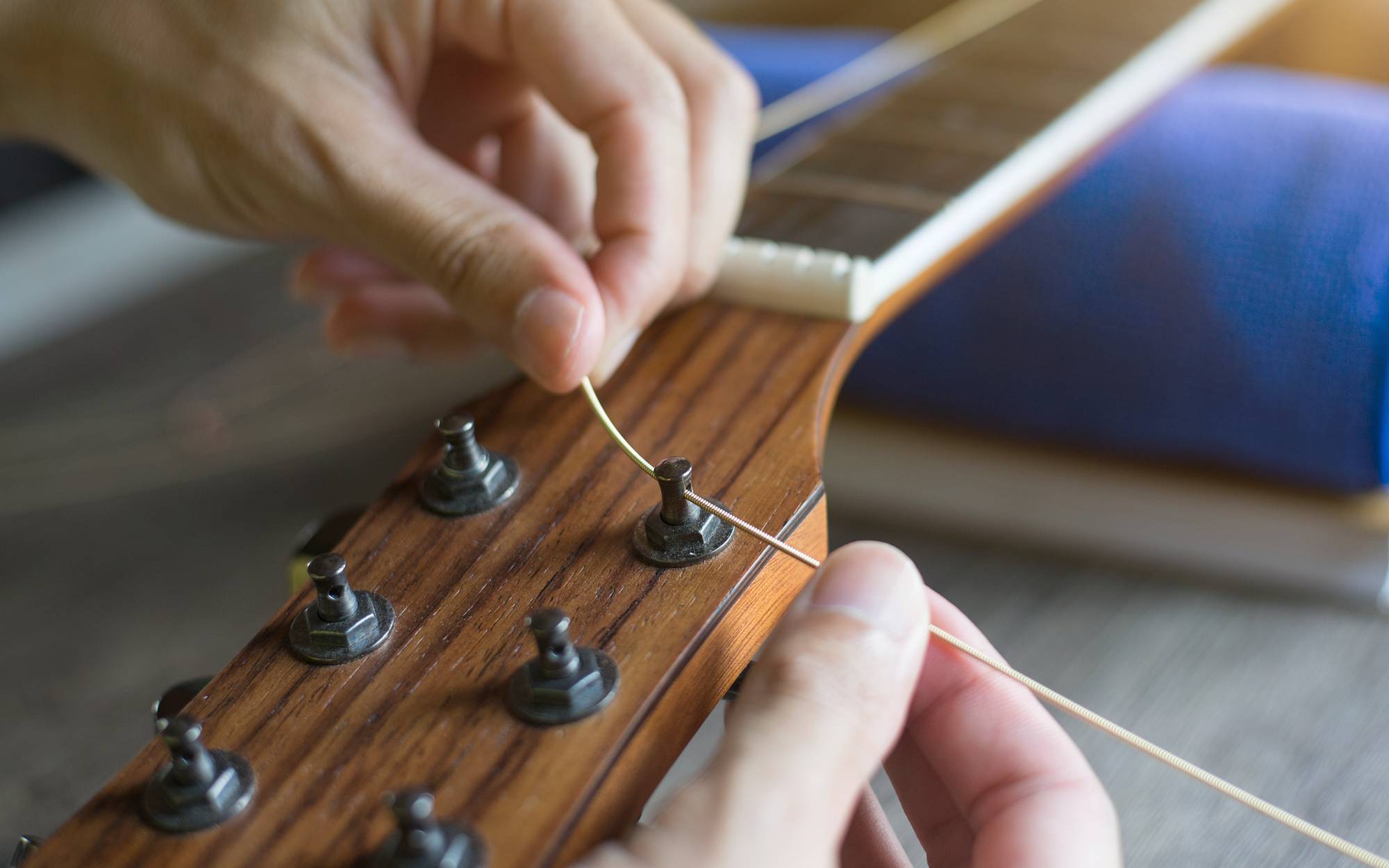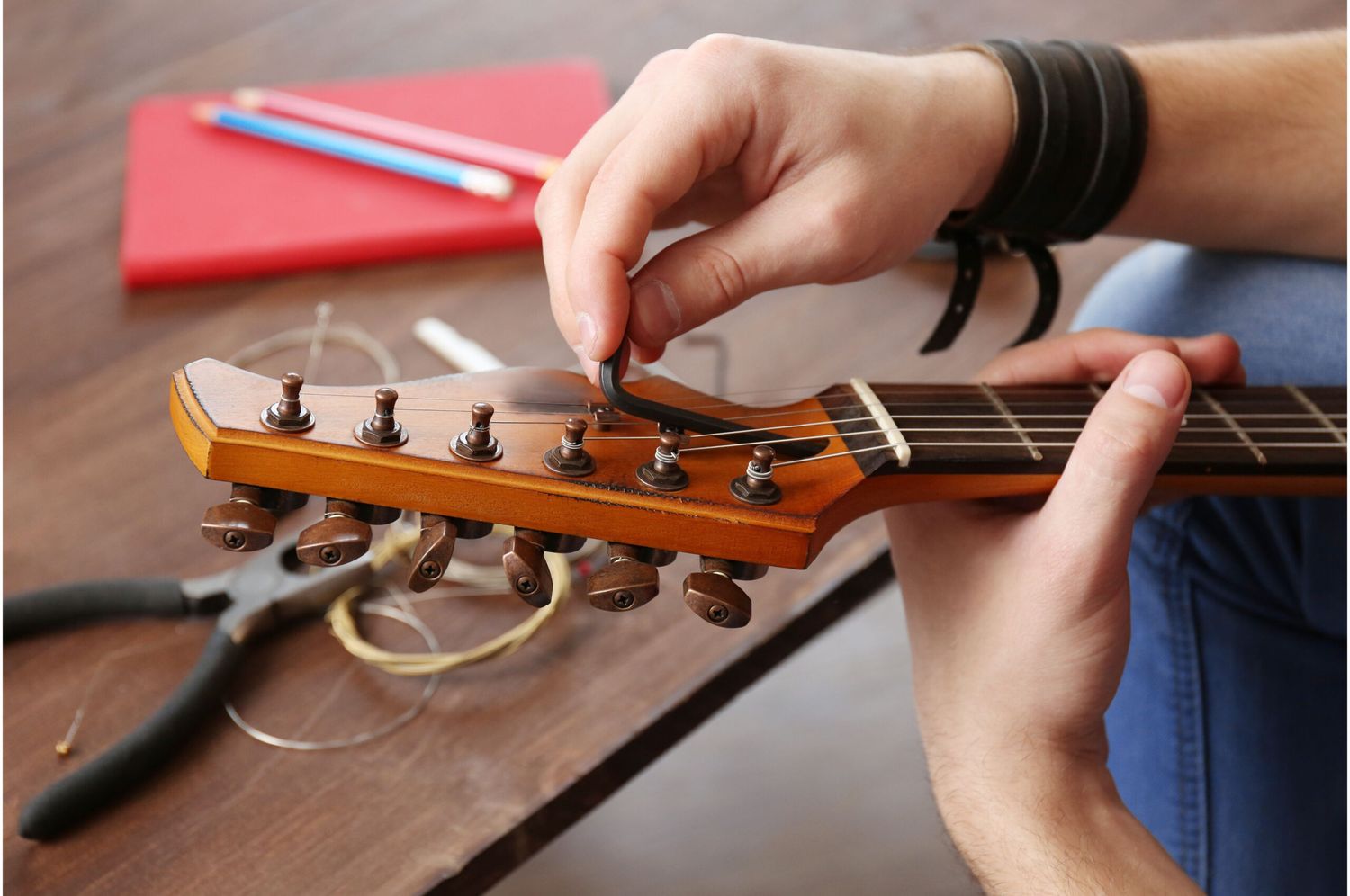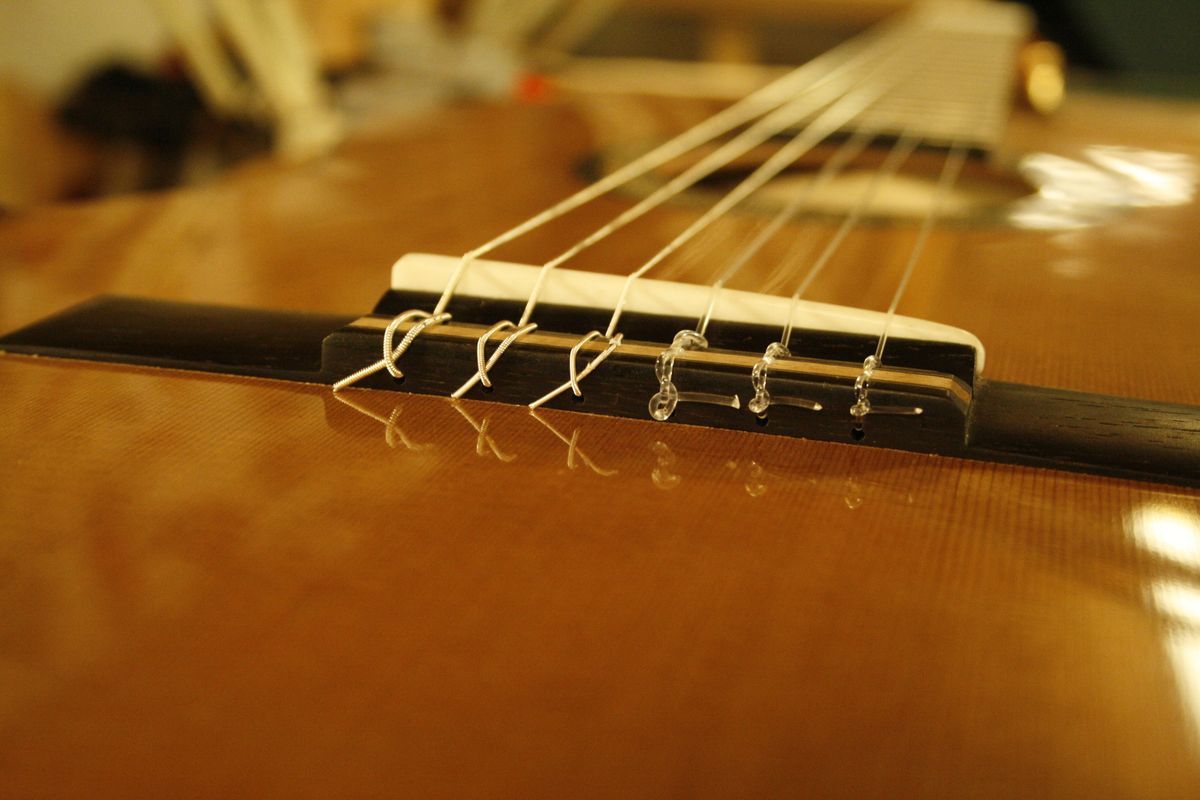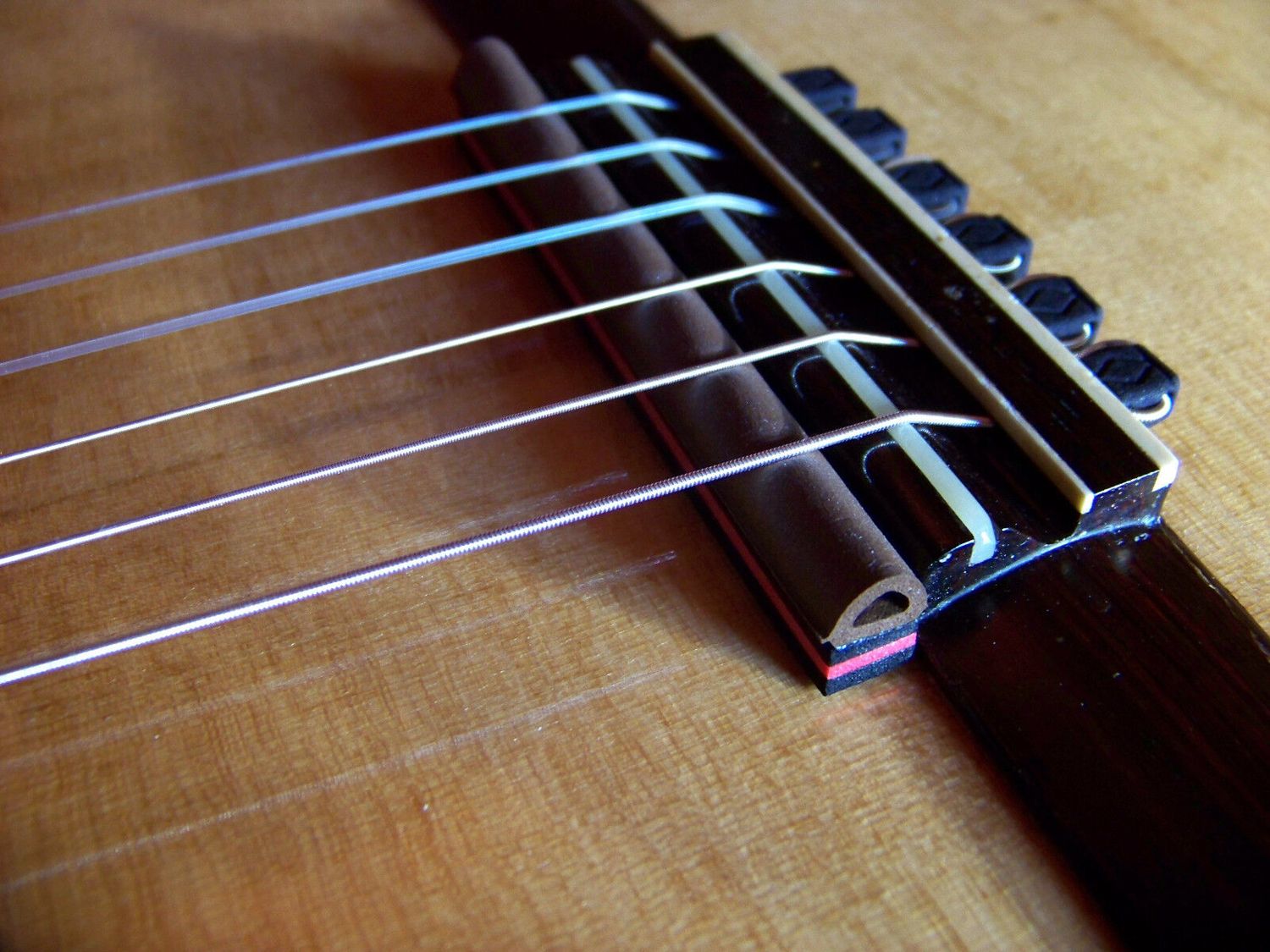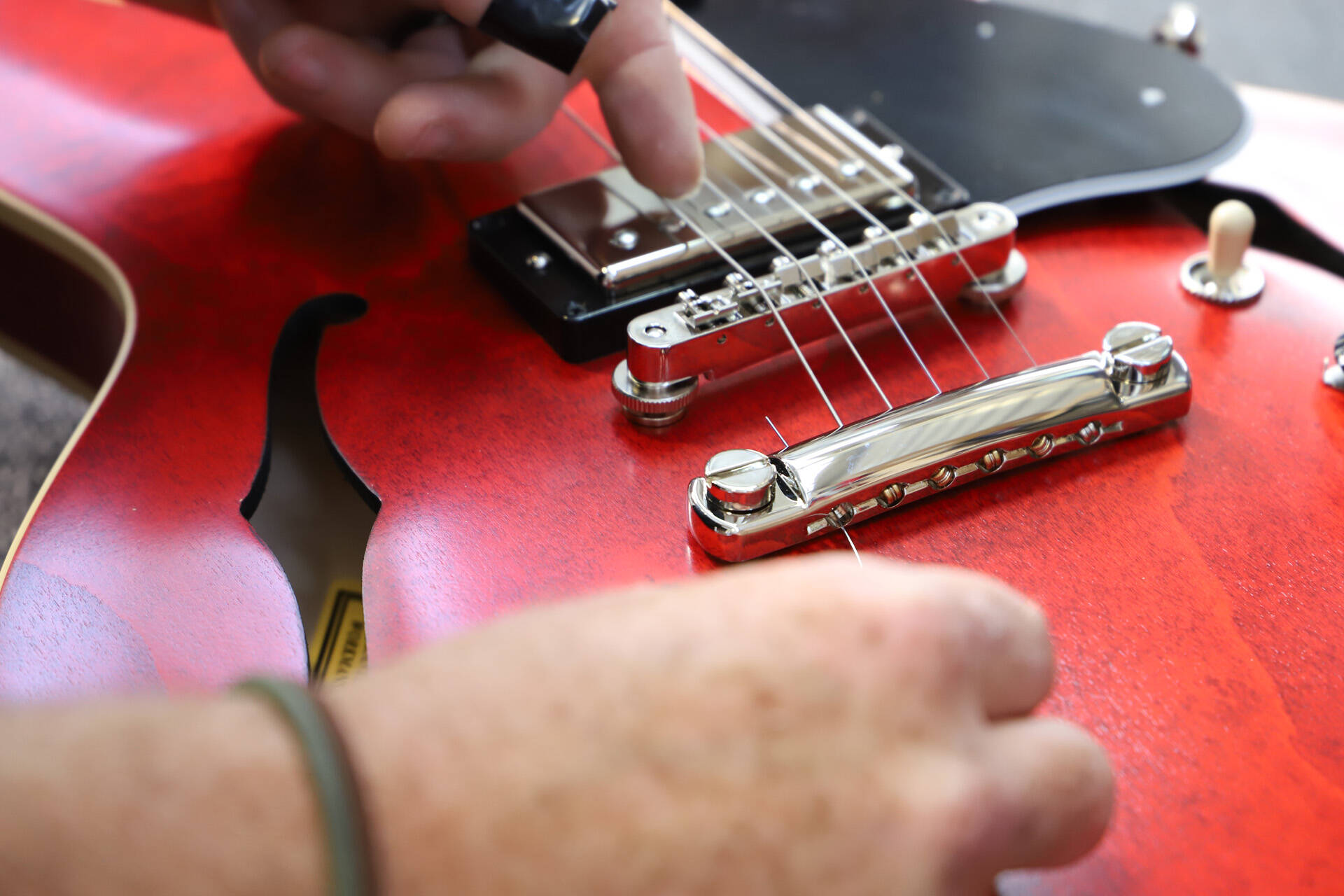Home>Instruments>Guitar>How To Play A 6-String Guitar


Guitar
How To Play A 6-String Guitar
Modified: February 14, 2024
Learn how to play a 6-string guitar with our comprehensive guide. Master the basics and advance your skills with expert tips and techniques. Become a guitar pro today!
(Many of the links in this article redirect to a specific reviewed product. Your purchase of these products through affiliate links helps to generate commission for AudioLover.com, at no extra cost. Learn more)
Table of Contents
Introduction
Understanding the Basics of a 6-String Guitar
The 6-string guitar is a versatile and popular musical instrument that has been a cornerstone of various music genres for centuries. Whether you're a complete beginner or an experienced musician looking to expand your repertoire, learning to play the 6-string guitar can be an incredibly rewarding experience. This article will guide you through the fundamental aspects of playing this iconic instrument, from understanding its components to mastering essential playing techniques.
The 6-string guitar, also known as the "acoustic guitar" or "electric guitar," features six strings that are typically tuned to EADGBE from the lowest-pitched string to the highest. Each string corresponds to a specific musical note, and when combined, they allow for a wide range of melodic and harmonic possibilities. The guitar's fretboard is divided into frets, which are the spaces between the metal strips running perpendicular to the strings. By pressing the strings against the frets at different positions, you can change the pitch of the notes, enabling you to play various chords, scales, and melodies.
Playing the 6-string guitar involves a combination of techniques, including strumming, fingerpicking, and fretting. These techniques form the foundation for creating captivating rhythms, expressive melodies, and intricate solos. Whether you aspire to strum along to your favorite songs, write your own music, or dazzle audiences with dazzling guitar solos, understanding the basics of the 6-string guitar is the first step toward achieving your musical goals.
In the following sections, we will delve into the essential aspects of playing the 6-string guitar, starting with holding the guitar correctly and tuning it to ensure optimal sound quality. Subsequently, we will explore basic chords, strumming techniques, and the art of playing melodies and solos. By the end of this guide, you will have gained valuable insights into the world of 6-string guitar playing, equipping you with the knowledge and skills to embark on a fulfilling musical journey. So, grab your guitar, and let's dive into the fascinating realm of 6-string guitar mastery.
Understanding the Basics of a 6-String Guitar
Before delving into the practical aspects of playing the 6-string guitar, it’s essential to familiarize yourself with its fundamental components. The 6-string guitar consists of several key elements that contribute to its unique sound and playability.
The Body: The body of the guitar serves as the main resonating chamber, amplifying the vibrations of the strings to produce sound. Acoustic guitars typically have a hollow body, while electric guitars may have solid or semi-hollow bodies, depending on the model.
The Neck and Fretboard: The neck of the guitar extends from the body and supports the fretboard, which is a flat surface with metal frets embedded along its length. The fretboard is where you press down on the strings to produce different notes and chords.
The Headstock and Tuning Pegs: Located at the end of the neck, the headstock houses the tuning pegs, which are used to adjust the tension of the strings, thereby altering their pitch. Proper tuning is crucial for achieving the correct musical intervals and ensuring that your guitar sounds harmonious.
The Strings: As the name suggests, the 6-string guitar is equipped with six strings, each tuned to a specific pitch. The strings are typically made of steel or nylon, with steel strings being common on acoustic and electric guitars, while classical guitars often feature nylon strings.
The Bridge and Saddle: The bridge of the guitar anchors the strings to the body, transmitting their vibrations to the soundboard. The saddle, located on the bridge, helps maintain the correct string height and spacing, contributing to the playability and intonation of the instrument.
Understanding the basic anatomy of the 6-string guitar will provide you with a solid foundation for exploring its sonic capabilities and mastering essential playing techniques. Whether you’re drawn to the rich, resonant tones of an acoustic guitar or the electrifying sounds of a solid-body electric guitar, the principles of guitar playing remain consistent across various styles and genres.
Now that you have a grasp of the guitar’s components, it’s time to pick up your instrument and familiarize yourself with its physical attributes. By developing a tactile understanding of the guitar’s construction, you’ll be better equipped to navigate the intricacies of fretting, strumming, and crafting your own musical expressions.
Holding the Guitar Correctly
Proper posture and positioning are crucial for playing the 6-string guitar comfortably and effectively. Whether you’re sitting or standing, adopting the correct posture will not only enhance your playing experience but also contribute to the overall sound and resonance of the instrument.
Sitting Position: When seated, place the guitar on your right leg (for right-handed players) or left leg (for left-handed players) so that the waist of the guitar rests on the leg. Keep your back straight and ensure that the guitar is positioned comfortably, allowing easy access to the fretboard and the lower bout for strumming or picking.
Standing Position: If you prefer to play the guitar while standing, use a guitar strap to support the instrument’s weight. Adjust the strap to a length that allows the guitar to rest at a comfortable height, enabling you to reach the frets and controls without straining. Maintain good posture by standing straight and keeping your shoulders relaxed.
Hand Placement: For the fretting hand (left hand for right-handed players, right hand for left-handed players), position your thumb behind the neck of the guitar, allowing your fingers to press down on the strings without excessive strain. The thumb should provide support and stability while allowing your fingers to move freely along the fretboard. For the strumming or picking hand, position your forearm comfortably over the guitar’s body, allowing your wrist to move fluidly for strumming or picking motions.
Balance and Comfort: Whether sitting or standing, strive for a balanced and relaxed posture. Avoid slouching or hunching over the guitar, as this can lead to discomfort and tension in your muscles. Finding a comfortable and balanced position will not only support your playing technique but also contribute to a more enjoyable and sustainable practice session.
By mastering the art of holding the guitar correctly, you’ll create a solid foundation for developing your playing skills and musical expression. Remember that comfort and ergonomics play a significant role in your ability to play the guitar effortlessly and with precision. As you become accustomed to holding the guitar in a way that suits your body and playing style, you’ll find that your musical journey becomes more enjoyable and fulfilling.
Tuning Your Guitar
Tuning is an essential aspect of playing the 6-string guitar, as it ensures that the instrument produces accurate and harmonious sounds. The standard tuning for a 6-string guitar is EADGBE, with the lowest-pitched string (6th string) tuned to E and the highest-pitched string (1st string) tuned to E. Proper tuning is crucial for playing chords, scales, and melodies with the correct pitch and harmonic intervals.
Electronic Tuners: Electronic tuners are valuable tools for accurately tuning your guitar. These devices detect the pitch of each string and provide visual or auditory feedback to help you adjust the tuning pegs until the strings are in tune. Electronic tuners are available in various styles, including clip-on tuners, pedal tuners, and smartphone apps, offering convenience and precision for guitarists of all levels.
Tuning by Ear: While electronic tuners offer accuracy and convenience, developing the ability to tune your guitar by ear is a valuable skill. By familiarizing yourself with the sound of each open string and its relation to the other strings, you can tune your guitar even in the absence of a tuner. This ear training not only sharpens your musical perception but also allows for greater flexibility in various playing situations.
Standard Tuning Method: To tune your guitar to standard EADGBE tuning, start by tuning the 6th string (low E) to the reference pitch of E. You can use an electronic tuner, a piano, or another tuned instrument as a reference. Once the 6th string is in tune, you can tune the remaining strings relative to the 6th string, using fretted notes or harmonics to ensure accurate pitch matching.
Maintenance and Stability: It’s important to regularly check and adjust the tuning of your guitar, as environmental factors and playing can cause the strings to go out of tune. Changes in temperature, humidity, and string tension can affect the guitar’s tuning, so periodic tuning checks are essential for maintaining consistent sound quality and playability.
By mastering the art of tuning your guitar, you’ll lay the groundwork for producing captivating music with precision and clarity. Whether you rely on electronic tuners, develop your ear for tuning, or employ a combination of methods, achieving and maintaining accurate tuning is a fundamental skill that will enhance your playing experience and musical expression.
Learning the Basic Chords
Mastering basic chords is a foundational element of playing the 6-string guitar, providing the building blocks for countless songs and musical compositions. Chords are formed by pressing down on the strings at specific frets to produce harmonious combinations of notes, creating rich and expressive sounds that form the backbone of many musical styles.
Open Chords: Open chords, such as the C major, G major, D major, E minor, and A minor, are among the first chords that aspiring guitarists learn. These chords are played using open strings and fretted notes in the first few frets of the guitar, making them accessible for beginners and essential for playing a wide range of popular songs.
Barre Chords: Barre chords involve using a single finger to press down multiple strings across the fretboard, allowing for the transposition of open chords to different keys and the creation of movable chord shapes. While barre chords may initially pose a challenge due to the finger strength and dexterity required, mastering them opens up a world of harmonic possibilities and musical versatility.
Power Chords: Power chords, consisting of the root note and the fifth interval, are prevalent in rock, punk, and metal music. Their simple yet powerful sound makes them a staple of electric guitar playing, and they can be moved up and down the fretboard to play chords with different root notes while maintaining the same shape.
Chord Progressions: Understanding chord progressions, or the sequence of chords in a song, is essential for developing musical fluency and songwriting skills. Common chord progressions, such as the I-IV-V progression, provide a framework for creating melodies and accompanying vocal or instrumental parts.
By familiarizing yourself with basic chords and their variations, you’ll gain the foundation for playing a diverse array of songs and exploring your creative potential as a guitarist. As you practice and internalize these chord shapes, you’ll develop the muscle memory and finger strength necessary to navigate the fretboard with confidence and precision.
Strumming Techniques
Mastering strumming techniques is essential for bringing rhythm and dynamics to your 6-string guitar playing. Whether you’re accompanying vocals, playing along with a band, or performing solo, the way you strum the strings can significantly impact the overall feel and groove of the music.
Downstrokes and Upstrokes: The most fundamental strumming movements are downstrokes and upstrokes. Downstrokes involve strumming the strings in a downward motion, typically on the strong beats of the music, while upstrokes involve strumming upward, often on the weaker beats or offbeats. By combining these motions, you can create rhythmic patterns and accents that complement the song’s structure and feel.
Rhythmic Patterns: Experimenting with various rhythmic patterns, such as straight quarter-note strumming, syncopated rhythms, and triplet patterns, allows you to infuse your playing with a diverse range of grooves and textures. Understanding how different strumming patterns interact with the song’s tempo and meter empowers you to tailor your playing to suit the musical context.
Dynamic Control: Strumming techniques also encompass dynamic control, which involves varying the intensity and volume of your strumming to convey expression and emotion. By adjusting the force and speed of your strumming hand, you can create passages that range from gentle and subdued to powerful and driving, adding depth and nuance to your musical interpretations.
Strumming Hand Position: Paying attention to the position of your strumming hand is crucial for achieving a balanced and consistent sound. Position your hand slightly above the soundhole or bridge, allowing your pick or fingers to make contact with the strings at an angle that produces a clear and resonant tone. Experiment with different hand positions to find the sound that best suits your playing style and the character of the music.
By honing your strumming techniques, you’ll unlock the rhythmic potential of the 6-string guitar and elevate your playing to new heights. Whether you’re strumming simple accompaniments, intricate rhythmic patterns, or percussive techniques, the art of strumming is a cornerstone of guitar playing that enhances the musical experience for both the player and the listener.
Playing Melodies and Solos
Exploring melodies and solos on the 6-string guitar opens up a world of expressive possibilities, allowing you to convey emotion, tell musical stories, and showcase your individuality as a guitarist. Whether you’re interpreting existing melodies or crafting original solos, developing proficiency in this area will enrich your musical journey and captivate audiences.
Single-Note Melodies: Playing single-note melodies involves picking or fretting individual notes to convey a specific tune or musical motif. This approach is common in lead guitar playing and allows for melodic expression and phrasing, akin to a vocalist or instrumental soloist.
Scales and Modes: Familiarizing yourself with scales and modes, such as the major scale, natural minor scale, pentatonic scale, and various modal scales, provides the melodic vocabulary for creating captivating solos and improvisations. Understanding the intervals and relationships within these scales empowers you to navigate the fretboard with confidence and craft melodically rich passages.
Bending and Vibrato: Bending notes and applying vibrato are expressive techniques that imbue melodies and solos with character and emotion. Bends involve altering the pitch of a note by physically bending the string, while vibrato adds subtle variations in pitch to infuse notes with warmth and expressiveness. Mastering these techniques enhances the depth and soulfulness of your playing.
Phrasing and Dynamics: Effective phrasing and dynamic control are essential for conveying musical narratives and engaging listeners. By shaping your melodies and solos with thoughtful phrasing, articulation, and dynamic variation, you can create compelling musical statements that resonate with depth and nuance.
Improvisation: Embracing improvisation allows you to spontaneously create melodies and solos in real time, responding to the musical context and expressing your musical instincts. Cultivating improvisational skills fosters creativity, spontaneity, and adaptability, enabling you to explore new musical territories and connect with the moment.
By delving into the realm of melodies and solos, you’ll embark on a journey of self-expression and musical discovery, honing your ability to communicate through the evocative language of the guitar. Whether you’re crafting soul-stirring melodies, unleashing scintillating solos, or engaging in collaborative improvisation, the art of playing melodies and solos on the 6-string guitar is a testament to the instrument’s boundless expressive potential.
Conclusion
Congratulations on embarking on the enriching journey of 6-string guitar playing. As you’ve navigated through the essential aspects of understanding, holding, tuning, and playing this iconic instrument, you’ve laid a solid foundation for your musical exploration and growth. Whether you’re drawn to the soulful resonance of an acoustic guitar or the electrifying versatility of an electric guitar, the principles and techniques you’ve encountered will serve as invaluable companions on your musical odyssey.
By understanding the basics of the 6-string guitar, including its components, tuning, and fundamental playing techniques, you’ve equipped yourself with the knowledge and skills to embark on a fulfilling musical journey. Holding the guitar correctly and mastering strumming techniques provide the physical and rhythmic foundations for your playing, while learning basic chords and exploring melodies and solos expand your harmonic and melodic horizons.
As you continue to hone your craft, remember that patience, perseverance, and passion are your steadfast allies. Embrace the joy of discovery as you uncover new chords, melodies, and techniques, and relish the expressive freedom that the 6-string guitar offers. Whether you’re strumming familiar chords, weaving intricate melodies, or unleashing scintillating solos, let your creativity and individuality shine through each note and phrase.
Music is a universal language that transcends boundaries and connects us on a profound level. As you immerse yourself in the world of 6-string guitar playing, cherish the moments of inspiration, the triumphs of progress, and the camaraderie of sharing music with others. Whether you aspire to serenade intimate gatherings, rock the stage with electrifying performances, or simply find solace in the embrace of your guitar, know that your musical journey is a tapestry of experiences waiting to unfold.
So, pick up your guitar, let your fingers dance across the fretboard, and allow the music to resonate from your heart. The 6-string guitar is not merely an instrument; it’s a conduit for your emotions, a vessel for your creativity, and a companion on your quest for musical fulfillment. Embrace the joy of playing, the magic of creation, and the timeless allure of the 6-string guitar. Your musical odyssey awaits—strum on, and let the music be your guide.

